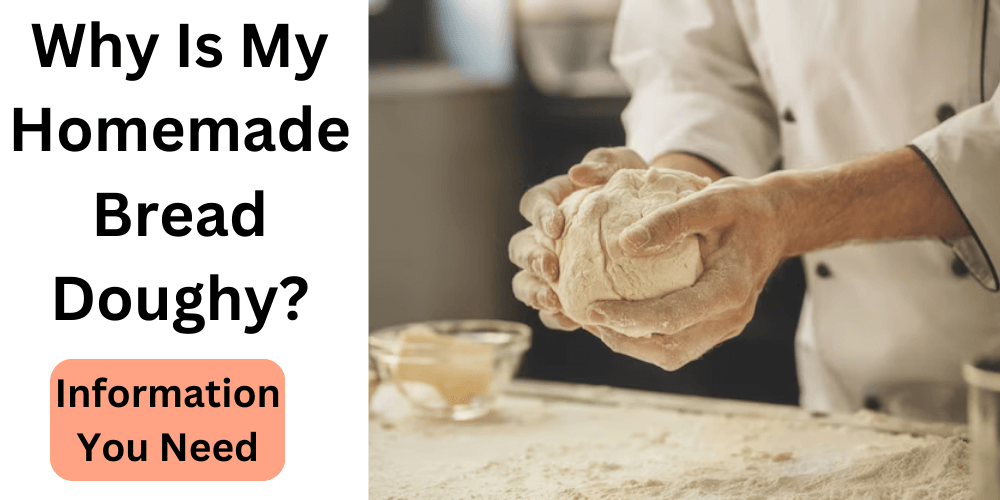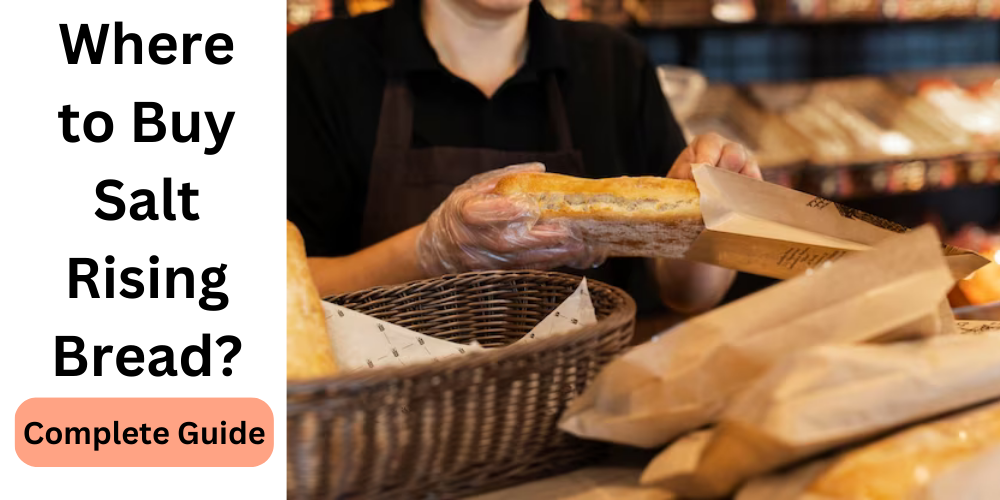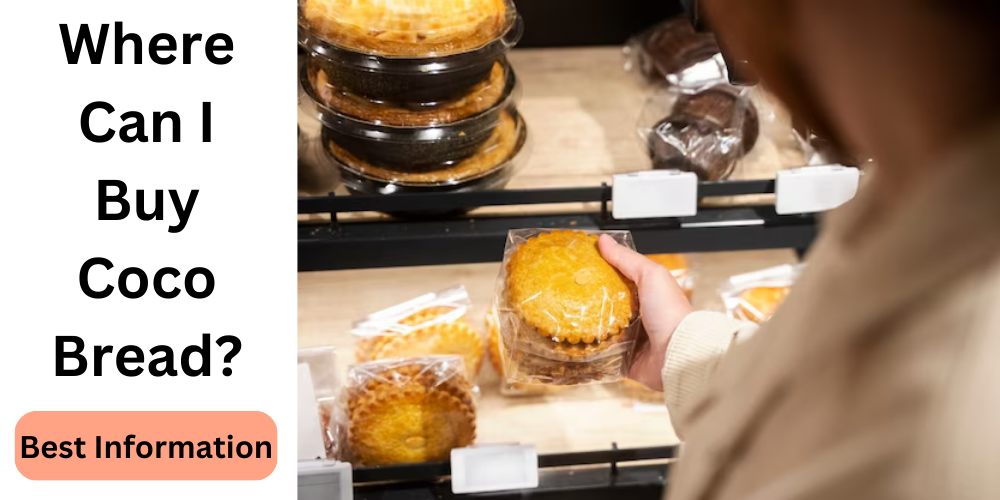There’s something innately rewarding about making your bread at home—the rhythmic kneading of the dough. The tantalizing aroma filling the kitchen, and finally, the satisfaction of biting into a warm, freshly baked loaf. However, the joy can quickly turn into frustration when your perfect loaf turns out to be doughy on the inside. So, why is my homemade bread doughy? In this comprehensive guide, we’ll explore this common baking conundrum and delve into the factors that cause doughiness in homemade bread.

Why Is My Homemade Bread Doughy?
In simple terms, homemade bread can turn out doughy due to a combination of factors. These can range from the type of ingredients used. The kneading and mixing technique, the yeast’s behavior, fermentation conditions, oven/baking conditions, dough hydration levels, and even the impact of altitude and climate. Let’s break down each of these factors to better understand why is my homemade bread doughy.
Ingredient-related Causes
The quality and type of ingredients used in bread-making play a significant role in the final product’s texture. For instance, the protein content in the flour determines the gluten formation, which directly impacts the bread’s structure. Using a low-protein flour can result in a bread that lacks the necessary structure and ends up being doughy.
Kneading and Mixing Issues
Kneading is not just a therapeutic exercise; it’s a crucial process that develops gluten networks in the bread dough. Under-kneading can lead to a weak gluten structure, causing the bread to be dense and doughy. Conversely, over-kneading can cause the gluten to become overly tough, resulting in a bread that’s dense and heavy.
Yeast-related Factors
Yeast is the magical ingredient that makes the bread rise. If the yeast is old or not activated properly, it can fail to produce enough gas, preventing the bread from rising adequately and resulting in a doughy texture.
Fermentation Problems
Fermentation is an essential step in bread-making that allows the yeast to feed on the sugars and produce gas—causing the dough to rise. If the fermentation time is too short, the bread may not rise enough and turn out dense and doughy.
Oven and Baking Conditions
Baking temperature and time are critical factors in determining the bread’s texture. If the oven temperature is too low or the baking time is too short, the bread may not fully bake, resulting in a doughy interior.
Dough Hydration Levels
The ratio of water to flour in the dough is referred to as hydration. Higher hydration can make the dough more sticky and challenging to work with, potentially leading to a denser, doughy texture.
Altitude and Climate Impact
The altitude and climate where you’re baking can significantly impact the bread-making process. High altitude or humidity can affect yeast activity and dough rise, potentially leading to doughy bread.
Related Guides:
- Does Toasting Bread Reduce Sodium?
- How Do Bread Machines Work?
- Why Did Prisoner Choose Bread Instead Of Key?
How Do You Fix Doughy Bread?
Fixing doughy bread involves addressing the potential issues we’ve discussed. Start by ensuring you’re using high-quality ingredients with appropriate proportions. Carefully knead your dough, striking a balance between under and over-kneading. Make sure your yeast is fresh and activated, and allow the dough adequate time to ferment. Adjust your oven’s temperature and baking time as needed, and factor in the hydration levels of your dough. Lastly, consider your local climate and altitude and adjust your bread-making process accordingly.
How Do You Make Homemade Bread Less Doughy?
To make your homemade bread less doughy, focus on proper kneading and fermentation. Maintain the right dough hydration levels, and ensure the correct oven temperature and baking time. Experiment with these variables and find what works best for your bread recipe and kitchen conditions.
What Makes Bread More Doughy?
Low-protein flour, insufficient kneading, outdated or inadequately active yeast, insufficient fermentation time, erroneous oven temperature or baking time, excessive dough hydration levels, and failing to take altitude or climatic effects into consideration are some of the factors that might cause bread to become more doughy.
Is It OK To Eat Slightly Doughy Bread?
While slightly doughy bread might not give you the texture you’re after, it’s generally safe to eat. However, it’s important to note that undercooked bread can have a higher moisture content. Which could potentially lead to mold growth if stored for an extended period.
Conclusion
Making homemade bread is a delightful and rewarding endeavor, but why is my homemade bread doughy. Don’t be disheartened if your loaves turn out doughy. Understanding the factors that contribute to this issue is the first step to troubleshooting and improving your bread-making process. Remember, every failed loaf is an opportunity to learn, tweak your process, and come one step closer to baking your perfect bread.
Sources:
- By Vern Shellman, What makes a loaf of homemade bread doughy on the inside while others have a nice texture and crumb? Posted 4 month ago




